#Graphic Design: A Guide to Crafting Visual Storytelling
Explore tagged Tumblr posts
Text

Graphic Design: A Guide to Crafting Visual Storytelling
Graphic design is a dynamic and creative field that plays a pivotal role in visual communication. This introduction sets the stage for understanding the significance of graphic design, its applications, and its impact on conveying messages through visuals.
Fundamental Concepts of Graphic Design
Delving into the fundamentals, this section explores the essential concepts that form the backbone of graphic design. From typography and colour theory to layout and composition, understanding these principles lays the groundwork for effective visual communication.
How Design Communication Works & Visual Storytelling
Graphic design goes beyond aesthetics; it is a form of communication. This section delves into how graphic design communicates messages effectively and explores the art of visual storytelling. From conveying emotions to guiding the viewer's eye, graphic design plays a crucial role in narrative construction.
Career in Graphic Design
A career in graphic design opens doors to diverse opportunities. This section explores the various paths one can take in the field of graphic design, from working with design agencies to freelancing. It also touches upon the range of industries that value the skills of graphic designers.
Why a Degree in Graphic Design
The decision to pursue a degree in graphic design is significant. This section outlines the reasons why individuals should consider formal education, emphasising the depth of knowledge, hands-on experience, and industry exposure gained through a degree program. Specifically, it explores why Lakhotia Colleges Certificate in Graphic Design is a valuable choice, highlighting the benefits and career exposure it offers.
Conclusion
In conclusion, graphic design is a powerful tool for visual storytelling, and its impact extends across various industries. Whether one is embarking on a career or considering a degree, the world of graphic design holds immense possibilities. This section summarises the key insights, encouraging individuals to explore the exciting and ever-evolving realm of graphic design for both personal and professional growth.
0 notes
Text
Top Video Editing Companies of 2025: Who’s Leading the Post-Production Game?

In the fast-paced digital world of 2025, content is king, and video reigns supreme. From TikTok clips and YouTube vlogs to cinematic ads and corporate presentations, video content dominates every platform. As a result, the demand for high-quality post-production services has never been higher. Businesses, creators, and agencies alike are turning to the best video editing companies to elevate their content and stand out in a saturated market.
This surge in demand has given rise to a new generation of elite editors, studios, and creative collectives. In this comprehensive guide, we highlight the top video editing companies of 2025, including notable names like Master RV Presentation Design Agency, that are redefining the art of post-production with innovation, storytelling, and cutting-edge technology.
Why Video Editing Matters More Than Ever
Before we dive into the top companies, it’s important to understand why video editing is such a crucial part of content creation in 2025.
1. First Impressions Count
Your video might be packed with brilliant ideas, but poor editing can derail your message instantly. Attention spans are shorter than ever, and seamless, polished editing ensures your audience stays hooked.
2. Brand Storytelling
Editing isn’t just about trimming clips; it’s about crafting a narrative. The best editors understand how to tell a brand's story visually and emotionally, resonating with target audiences across platforms.
3. Multi-Platform Compatibility
From vertical videos for mobile-first apps to widescreen formats for presentations and commercials, editors must optimize content for multiple platforms. The top video editing companies are masters at this.
Criteria for Selecting the Best Video Editing Companies
We evaluated dozens of companies based on the following factors:
Creative quality and portfolio
Client testimonials and satisfaction
Innovation in tools and workflow
Range of services offered
Turnaround time and cost-effectiveness
Here are the companies that stood out in 2025.
1. Master RV Presentation Design Agency
Known primarily for its award-winning design work, Master RV Presentation Design Agency has made significant strides in top video editing and post-production services. What sets them apart is their holistic approach—merging visual design, narrative flow, and editing finesse to create truly immersive video experiences.
Notable Features:
Corporate and executive video editing
AI-assisted editing workflows for faster turnaround
Specializes in presentation-based videos with dynamic motion graphics
Tailored editing for B2B marketing and educational content
Their unique blend of presentation design and video editing expertise makes them a go-to choice for organizations looking to elevate internal communications, webinars, and brand storytelling.
2. Blackbox Global Studios
With offices across North America, Blackbox Global Studios is a powerhouse in creative video post-production. Known for their work with global brands and film producers, their editing style blends cinematic flair with strategic storytelling.
Highlights:
Hollywood-level color grading and VFX integration
Multi-lingual editing capabilities for international clients
Offers editing for commercials, documentaries, and branded content
Their portfolio includes work for Fortune 500 companies and streaming platforms, making them one of the most sought-after video editing companies worldwide.
3. Viddedit
A favorite among influencers and small businesses, Viddedit offers cost-effective yet professional post-production services. Their subscription-based model allows users to send in raw footage and receive polished content within days.
Services Offered:
Social media reels and stories
YouTube content editing
Real estate and event highlight reels
Viddedit’s focus on fast delivery and scalable editing solutions makes it ideal for digital marketers, vloggers, and content creators with high-output needs.
4. Animoto Pro Studio
Originally a DIY video tool, Animoto evolved into a full-scale editing agency offering custom services for brands. In 2025, Animoto Pro Studio is known for its clean, professional editing tailored for corporate storytelling.
Core Strengths:
Business video creation (case studies, testimonials, product walkthroughs)
Easy collaboration with clients via cloud-based tools
AI-enhanced visual optimization
Their integration with CRM platforms allows businesses to track video performance directly from within their workflows.
5. Creamy Animation
This Canadian-based creative agency specializes in explainer videos, product animations, and educational content. Their mastery of post-production services extends to 2D/3D animation and motion graphics.
Key Offerings:
Custom whiteboard animations
SaaS product video editing
Animated training content for enterprises
Creamy Animation is particularly known for helping complex ideas become clear and engaging through animation-led video storytelling.
6. Tasty Edits
Tasty Edits has become a favorite for creators who value authenticity and creative edge. Their team works with vloggers, podcasters, and entrepreneurs to craft vibrant, high-impact content.
Highlights:
Personalized editing packages
Zoom call editing for online courses
Podcast video production and editing
Tasty Edits brings a personal touch to each project, making them a popular choice among solo creators and micro-influencers.
7. Cut Pro Media
With a global remote team, Cut Pro Media provides round-the-clock post-production services for weddings, events, and promotional videos. They focus on emotional storytelling, making each video feel cinematic and personal.
Features:
Multi-camera wedding edits
Music synchronization
Affordable packages for freelancers and small studios
Cut Pro Media continues to serve clients looking for beautifully edited videos without breaking the bank.
8. VeracityColab
This California-based agency focuses on branded storytelling through video. Their top video editing skills are used to build brand identity and foster emotional engagement with audiences.
Services Include:
Brand films and promos
Startup and investor pitch videos
Video marketing strategy consulting
VeracityColab partners with tech startups and mid-sized brands to deliver impactful visual messaging.
9. Epipheo
Epipheo is known for creating videos that simplify complex topics. They combine storytelling, animation, and video editing to produce educational and B2B content.
Strengths:
Explainer video specialists
Focus on SaaS, healthcare, and fintech sectors
Human-centric editing style
Their editors and animators collaborate closely to ensure clarity, emotion, and visual coherence in every project.
10. MotionCue
MotionCue delivers dynamic content for digital campaigns. Their editing process incorporates animation, typography, and sound design for maximum impact.
Capabilities:
Ad spot editing for social platforms
Corporate brand films
Mobile-first video formatting
They offer fast turnarounds without sacrificing quality, helping brands move quickly in a competitive content landscape.
Trends Driving the Video Editing Industry in 2025
AI and Automation
AI is transforming video editing through features like auto-cutting, smart transitions, and real-time feedback. Agencies like Master RV Presentation Design Agency are incorporating AI for efficiency while preserving creative integrity.
Cloud-Based Collaboration
Teams can now edit collaboratively from different parts of the world, streamlining the post-production process and reducing turnaround times.
Vertical and Mobile-First Editing
As mobile platforms dominate content consumption, editors prioritize vertical and square formats tailored for TikTok, Instagram, and YouTube Shorts.
Interactive Video
Interactive hotspots, clickable CTAs, and branching narratives are adding new dimensions to traditional video content.
Conclusion
The top video editing companies of 2025 are more than just post-production vendors—they're creative partners who help shape stories that move, inform, and inspire. Whether you’re a corporate leader seeking polished presentations or a content creator chasing viral success, the right editing team makes all the difference.
As the lines between design, storytelling, and video continue to blur, agencies like Master RV Presentation Design Agency exemplify what it means to deliver holistic, high-impact post-production services in today’s dynamic media environment.
By choosing the right partner, embracing innovation, and staying aligned with your creative goals, you can ensure your video content not only looks great but delivers results.
2 notes
·
View notes
Text
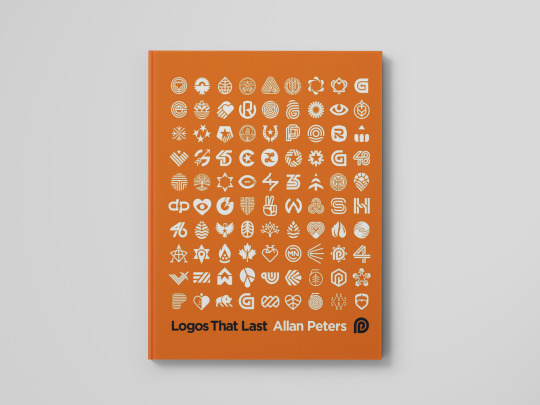
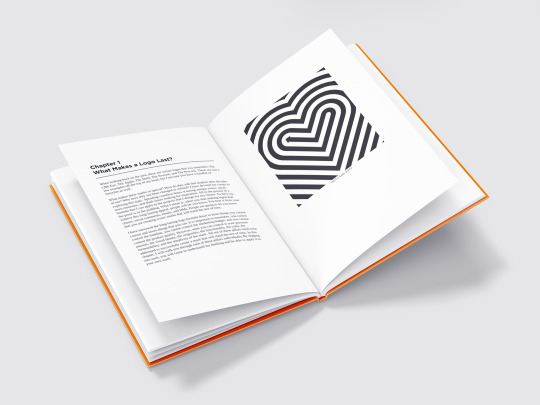
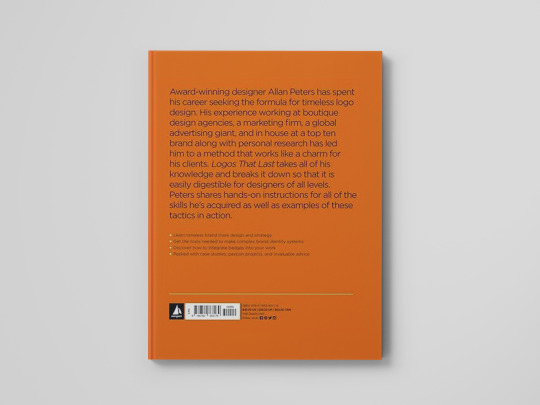

Author name: Allan Peters
Book title: Logos That Last: How to
Create Iconic Visual Branding
Pages: 208 pages
Year of Publication: 2023
Publisher: Rockport Publishers
About the Author:
Allan Peters is a notable designer and author, recognized for his work in graphic design, branding, and typography. He has a strong presence in the design community, particularly known for his contributions to visual identity and user experience design. Peters has worked with various high-profile brands and has a distinct style that often blends modern aesthetics with a touch of retro influence.
About the Book:
"Logos That Last: How to Create Iconic Visual Branding" by Allan Peters is a comprehensive guide focused on the principles and practices of effective logo design. The book aims to equip designers with the tools and insights necessary to create memorable and enduring brand identities.
Introduction
In the introduction, Allan Peters shares his journey as a designer and the motivations behind writing the book. He emphasizes that a successful design career relies on dedication, passion, and continuous learning, rather than just innate talent. Peters illustrates how each project enriches a designer's understanding of branding, highlighting the iterative nature of the design process.
He advocates for lifelong learning and engaging with diverse disciplines to enhance creativity and problem-solving. By merging personal experiences with industry insights, Peters inspires both novice and seasoned designers to embrace their craft. Ultimately, he asserts that dedication and a commitment to growth can lead to the creation of logos that resonate with audiences and stand the test of time, fostering iconic visual branding.
Chapter 1: What Makes a Logo Last?
This chapter explores the essential elements that contribute to the longevity of iconic logos. Peters identifies three factors beyond the designer's control—timeline, marketing budget, and product quality—and seven controllable elements: personal passion, visual beauty, originality, functionality, colour, memorability, and simplicity. He explains how these factors come together to create logos that stand the test of time.
Chapter 2: Brand Mark Process
Peters outlines his unique and meticulous six-week logo design process. He emphasizes the importance of client education and a clear methodology to ensure successful outcomes. This process includes thorough research, brainstorming, sketching, and refinement, culminating in a logo that is both effective and enduring.
Chapter 3: Inspiration Hunting
In this chapter, Peters advocates for sourcing inspiration beyond digital platforms. He encourages designers to explore antique stores, estate sales, and small-town museums to discover timeless and unique designs. This approach enriches a designer's work and helps avoid the homogenization often seen in the design community.
Chapter 4: Badge Design Process
Peters challenges the conventional dismissal of badge designs, arguing for their versatility and rich storytelling potential. He explains how to create modular brand systems that include badges, enhancing a brand's identity and making it more memorable.
Chapter 5: Brand Extensions
Peters discusses the importance of integrating brand elements across all design aspects. By incorporating the core elements of a brand mark into patterns, icons, custom typography, and illustrations, designers can maintain strong branding without needing overly prominent logos.
Chapter 6: Brand Evolution
Rather than starting from scratch, Peters highlights the strategic benefits of evolving existing logos to retain brand equity. He provides examples of how subtle refinements can enhance a logo's design while preserving its familiarity and recognition.
Chapter 7: The Shop
During the 2020 pandemic, Peters leveraged his passion for design by creating an online shop. He shares insights into merchandise design and the creative process behind his products, demonstrating adaptability and entrepreneurial spirit.
Chapter 8: Case Studies
Peters presents real-life projects to illustrate how his principles and processes can be applied to various clients' needs and budgets. Each case study showcases the creation of enduring brand identity systems, providing practical examples for readers.
Chapter 9: Passion Projects
Emphasizing the importance of passion in graphic design, Peters encourages designers to pursue passion projects to refine their skills and fuel their creativity. He shares personal anecdotes and underscores the value of doing work that truly inspires and motivates.
Conclusion
Allan Peters skillfully combines theoretical insights with practical advice in **"Logos That Last", providing a valuable guide for designers seeking to create impactful and enduring visual branding. He emphasizes the connection between design theory and practice, illustrating how a strong grasp of fundamental principles enhances the creative process.
Peters advocates for dedication and a systematic approach, essential for crafting logos that engage audiences and foster lasting connections. He also encourages reflective practice, urging designers to consider the cultural and historical contexts of their work. Ultimately, **"Logos That Last"** serves as both a practical resource and an inspiring guide, equipping designers to create logos that resonate through time and contribute meaningfully to the contemporary branding landscape.
@uob-funoon
#Design#Branding#GraphicDesign#Logos#DesignInspiration#LogoDesign#TimelessDesign#DesignBooks#art and design#uob#FA426#art#AllanPeters#LogosThatLast#uob_funoon
3 notes
·
View notes
Text
Sleep Token: A Mesmerizing Discography of Harmony and Depth
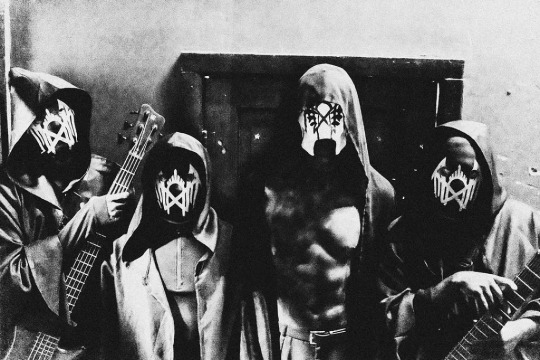
In an era where musical cohesion and thematic storytelling within albums seem to have taken a backseat, Sleep Token emerges as a breath of fresh air. Their discography, consisting of "One," "Two," "Sundowning," "This Place Will Be Your Tomb," and "Take Me Back to Eden," stands as a testament to the band's unwavering commitment to crafting aural experiences that transcend the ordinary.

The journey through Sleep Token's discography is akin to embarking on a profound spiritual odyssey. From the hauntingly ethereal "One" to the enigmatic "Two," the groundwork for their sonic universe is laid. However, it's in the final trilogy – the awe-inspiring progression from "Sundowning" to "This Place Will Be Your Tomb" and culminating in "Take Me Back to Eden" – that the band's genius truly shines.

It's an experience like no other to listen to this trilogy in succession. The albums are woven with a meticulous thread, each song seamlessly transitioning into the next, creating a coherent narrative that's both immersive and captivating. It's a rarity in today's music landscape to find albums that not only possess individual standouts but also present a holistic journey where each track complements the others, all working together to amplify the overarching theme.

At the heart of Sleep Token's captivating allure lies the extraordinary songwriting prowess of their enigmatic lead singer, Vessel. With an uncanny ability to delve deep into the recesses of human emotion, Vessel crafts lyrics that resonate on a profoundly personal level. His songwriting transcends conventional boundaries, exploring themes of spirituality, vulnerability, and the human experience with a poetic eloquence that leaves an indelible mark. The lyrical tapestries he weaves evoke a sense of introspection, drawing listeners into a world of intricate narratives and haunting melodies. Vessel's gift for storytelling, coupled with his literal emotive delivery, results in songs that not only captivate the ear but also touch the soul, leaving a lasting imprint that lingers long after the music fades.

An integral facet that elevates Sleep Token's discography to unparalleled heights is the impeccable music production and audio engineering work contributed by the talents of Carl Brown from Treehouse Studios and George Lever of G1 Productions. Their collaborative efforts have played a pivotal role in bringing the band's vision to life, with every note and nuance meticulously crafted. The albums bear testament to their skilful touch, as each instrument resonates with clarity, and every whisper of Vessel's vocals is imbued with raw emotion. Brown and Lever's expertise acts as the invisible hand that guides the listener through the intricacies of Sleep Token's ethereal soundscapes, making the auditory journey as enchanting as it is immersive.

When it comes to translating their studio brilliance into live performances, Sleep Token is nothing short of exceptional. The band's stage presence is mesmerizing, drawing the audience into their spellbinding world. Perhaps even more astonishing is the fact that Vessel's vocals remain untouched by the heavy hand of autotune or vocal correction software. His voice, heard live, is a mirror image of what you've come to adore from their recordings, showcasing the band's authenticity and musicianship.

A noteworthy aspect of Sleep Token's artistry is their visual identity, thoughtfully brought to life recently by Alex Tillbrook Design. The graphics for their albums and merchandise resonate harmoniously with their musical essence. The attention to detail is evident, reflecting the band's commitment to a holistic experience that extends beyond just the auditory realm.

In a musical landscape dominated by singles and fleeting trends, Sleep Token's discography stands as a masterpiece of cohesion, depth, and unadulterated passion. Their commitment to crafting albums that weave a seamless tapestry of themes and emotions harks back to a time when the 90s music scene was known for its dedication to storytelling through albums.

I am deeply enamoured by the captivating allure of Sleep Token's enigmatic anonymity, a sentiment beautifully encapsulated in their profound statement, "Our identities are unimportant. Music is marketed on who is or isn't in a band; it's pushed, prodded, and molded into something it isn't. Vessel endeavours to keep the focus on His offerings." Within the realm of Sleep Token's music, the conventional fixation on individual personas is gracefully set aside, allowing the divine essence of their artistry to take center stage.

This intentional detachment from personal identities enables a pure connection with their music, permitting listeners like yourself and myself to be swept away by the ethereal melodies without the distractions of the mundane world. As I immerse myself in the mystique of Sleep Token, I find solace in the idea that their music is an offering, a sacred creation meant to transcend the limitations of the known, inviting us to experience a profound and unifying journey guided solely by the resonating notes and unspoken emotions.

As a dedicated listener, I can't help but yearn for the day when I can witness Sleep Token's magic on stage in person. The anticipation of their live performance is enough to send shivers down the spine. And as the music world eagerly awaits their future creations, there's a sense of excitement and curiosity about where their artistic journey will lead. Here's to hoping for a chance to witness Sleep Token's live magic and to eagerly awaiting the next chapter in their evolving musical saga 🥂.

(All images taken from their facebook page and, my guess, by their touring photographer Adam Rossi)

If you made it this far, thank you for reading. Hope I can produce an album of this magnitude some day. - worship - Murdered Doubt
#sleep token#sleep token worship#sleep token vessel#sleep token ii#sleep token iii#sleep token iv#sleep token one ep#sleep token two ep#sleep token sundowning#sleep token this place will be your tomb#sleep token take me back to eden#sleep token live#sleep token review
24 notes
·
View notes
Text
Unveiling the Best Digital Marketing Agency: A Comprehensive Exploration

In the ever-evolving landscape of digital marketing, where strategies are as diverse as the platforms they inhabit, identifying the best digital marketing agency is a pursuit that demands careful consideration and thorough evaluation. With businesses increasingly relying on digital channels to reach their target audiences and drive growth, the role of these agencies has become more critical than ever before. But what sets the best digital marketing agencies apart from the competition? In this comprehensive exploration, we delve into the key attributes and distinguishing factors that define excellence in the realm of digital marketing.
At the heart of every successful Digital marketing agency lies a deep understanding of the digital ecosystem and a relentless pursuit of innovation. The best agencies are not content to simply follow trends; they are trendsetters, constantly pushing the boundaries of what's possible and pioneering new approaches to digital marketing. From harnessing the power of emerging technologies like artificial intelligence and machine learning to leveraging the latest trends in social media and content marketing, these agencies stay ahead of the curve to deliver unparalleled results for their clients.
Moreover, the best digital marketing agencies understand that success in the digital realm requires more than just technical expertise; it requires a deep understanding of human behavior and psychology. By combining data-driven insights with a keen understanding of consumer psychology, these agencies are able to create highly targeted campaigns that resonate with their clients' target audiences on a profound level. Whether it's crafting compelling storytelling narratives or designing interactive experiences that captivate and engage, they know how to create meaningful connections that drive real results.
Another hallmark of the best digital marketing agencies is their unwavering commitment to client success. Unlike fly-by-night agencies that prioritize short-term gains over long-term partnerships, the best agencies view their clients as true partners in success. They take the time to truly understand their clients' unique goals, challenges, and opportunities, and they tailor their strategies accordingly to ensure maximum impact. Whether it's increasing brand awareness, driving lead generation, or boosting sales, these agencies are laser-focused on delivering tangible results that move the needle for their clients' businesses.
Furthermore, transparency and accountability are core principles that guide the operations of the best digital marketing agencies. They believe in full transparency when it comes to their strategies, methodologies, and performance metrics, and they provide their clients with regular updates and detailed reports to keep them informed every step of the way. By fostering a culture of transparency and open communication, these agencies build trust and credibility with their clients, laying the foundation for long-term partnerships built on mutual respect and collaboration.
Creativity is another key differentiator that sets the best digital marketing agencies apart from the competition. In a crowded digital landscape where attention spans are short and competition is fierce, creativity is the currency of success. The best agencies boast teams of creative visionaries who are passionate about pushing the boundaries of conventional thinking and exploring new ideas and concepts. Whether it's designing visually stunning graphics, producing compelling video content, or crafting engaging social media campaigns, these agencies know how to capture attention and inspire action in their target audiences.
In conclusion, the best digital marketing agencies are more than just service providers; they are strategic partners who are committed to driving real, measurable results for their clients. With their deep understanding of the digital ecosystem, their relentless pursuit of innovation, their unwavering commitment to client success, and their dedication to transparency and accountability, these agencies are the driving force behind some of the most successful digital marketing campaigns in the world. Partnering with the best digital marketing agency is not just a choice; it's a strategic imperative for any business looking to thrive in the digital age.
#digital marketing#seo services#digital marketing agency#digital marketing services#social media marketing#email marketing
3 notes
·
View notes
Text
Traditional Vs. Modern Language Teaching Materials
Traditional language teaching materials are like time-worn manuscripts, carrying the weight of history. Textbooks and chalkboards echo with the whispers of the past, embracing a sense of nostalgia. In contrast, modern materials are the sleek smartphones of education, interactive and dynamic. They dance with multimedia, embracing a symphony of visuals and sounds. It's a classic tale of parchment versus pixels, where the pen meets the touchscreen in the eternal saga of language learning.
Traditional Language Teaching Materials
Imagine a vibrant language classroom adorned with a linguistic tapestry – a giant word wall splashed with vivid verbs, nouns, and adjectives. Interactive language games come to life with magnetic poetry boards, fostering a dynamic atmosphere where students eagerly rearrange words to construct sentences. In the corner, a whimsical grammar garden blooms with colorful parts of speech, creating a visual symphony that transforms language learning into a lively, immersive experience.
Example of Traditional Language Teaching Materials:
1. Visual Aids:
A compelling visual aid for language learning is a vibrant, large-scale mind map prominently displayed in the classroom. This meticulously crafted visual organizes key language concepts, linking vocabulary themes, grammar rules, and cultural elements in a visually appealing and interconnected manner. Utilizing a spectrum of colors, it not only captures attention but also aids in categorizing and recalling information effectively. The central theme, perhaps the target language's core principles, serves as the focal point, with branching pathways guiding learners through related topics. This dynamic visual aid transforms abstract linguistic concepts into a tangible, accessible roadmap, fostering a more engaging and comprehensive learning experience for students.
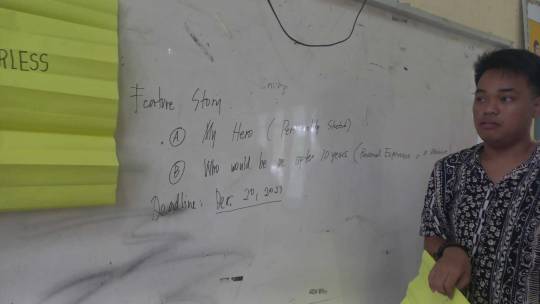
2. Flash Cards:
Flashcards are concise, portable learning tools featuring a word, phrase, or concept on one side and a corresponding image or definition on the other. Used in language teaching, they reinforce vocabulary, facilitate word-picture associations, and make memorization interactive and enjoyable.
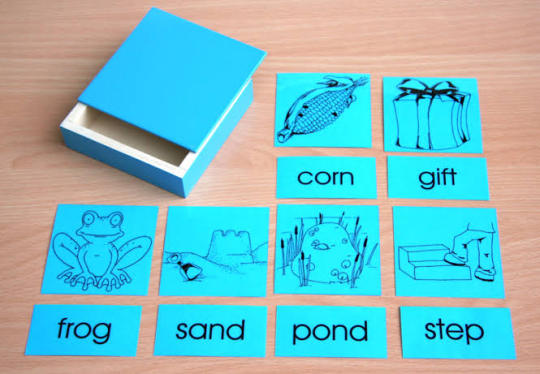
3. Mind Maps:
Mind maps are graphical representations that visually organize information around a central theme. In language education, they serve as dynamic tools for brainstorming, structuring ideas, and revealing relationships between words or concepts. Mind maps stimulate creative thinking and enhance memory retention by providing a holistic view of language elements.

4. Creative Learning Materials:
Creative learning materials encompass a variety of inventive resources designed to make language learning engaging and effective. These may include games, puzzles, role-playing activities, and hands-on projects. By integrating creativity into language education, these materials promote active participation and reinforce language skills in a lively and memorable way.
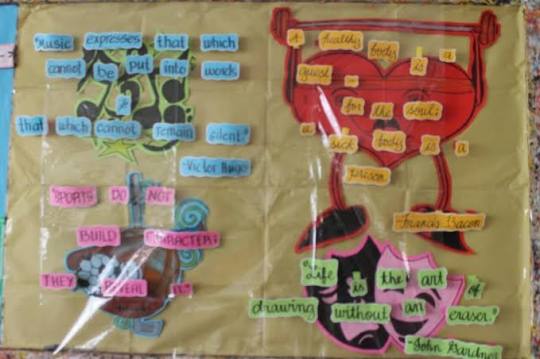
5. Story Boards:
Storyboards are sequential visual representations that break down a narrative into key scenes or events. In language teaching, storyboards facilitate storytelling and language production. Learners can use them to plan, illustrate, and present narratives, enhancing their linguistic abilities while fostering creativity and storytelling skills. Storyboards provide a structured framework for language learners to express themselves in a narrative format.
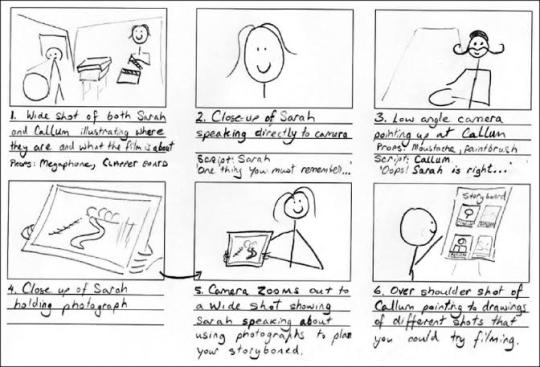
Modern Language Teaching Materials
Imagine a futuristic language learning experience where sleek, holographic language modules materialize in the air, seamlessly blending technology and education. These avant-garde materials use augmented reality to project interactive lessons, where students can virtually explore language landscapes, converse with lifelike avatars, and manipulate 3D linguistic constructs. Each module is a digital masterpiece, adapting to individual learning styles and dynamically responding to progress. Gamified challenges, real-world simulations, and AI-driven feedback transform language acquisition into an immersive adventure. This cutting-edge approach to language teaching materials not only embraces innovation but sparks a sense of curiosity and excitement, propelling learners into a technologically enriched linguistic journey.
Examples of Modern Language Teaching Materials:
1. Interactive Apps:
Cutting-edge language teaching materials often include interactive apps that engage learners through gamified exercises, real-life scenarios, and personalized feedback. These apps cater to various proficiency levels, offering dynamic content and adaptive learning paths, making language acquisition both enjoyable and effective.

2. Augmented Reality (AR) Flashcards:
Modern language teaching embraces AR flashcards that bring static images to life. By using a smartphone or tablet, learners can hover over these cards, triggering immersive experiences. For instance, pointing a device at a vocabulary card might generate 3D models, pronunciation guides, or interactive quizzes, enhancing the overall learning engagement.
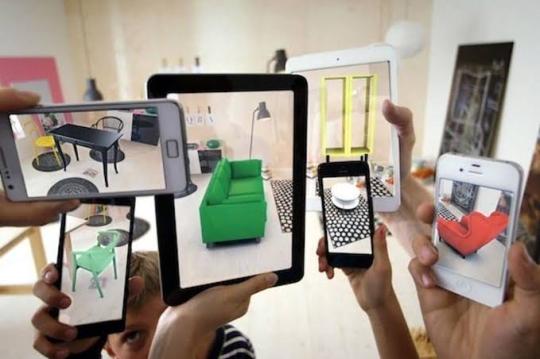
3. Online Simulations and Virtual Reality (VR):
Language teaching materials now leverage online simulations and VR experiences. These immersive environments enable learners to practice language skills in realistic scenarios, such as ordering food in a restaurant or navigating a foreign city. VR enhances cultural understanding and fosters practical language application.
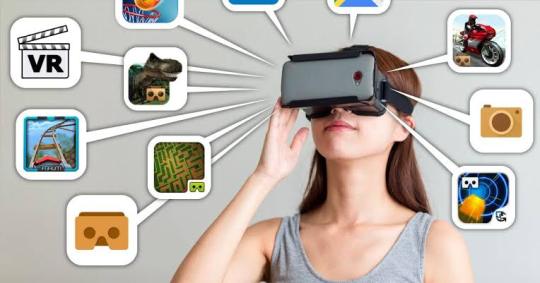
4. Authentic Multimedia Texts:
Contemporary language materials incorporate authentic multimedia texts like podcasts, vlogs, and news clips. These real-world examples expose learners to diverse accents, colloquial expressions, and current events, promoting cultural awareness and providing relevant context for language acquisition.
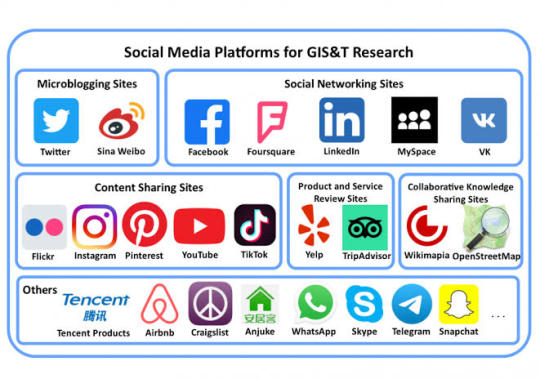
5. Digital Collaborative Platforms:
Language teaching materials often include digital collaborative platforms where students can engage in virtual language exchange, collaborative projects, and real-time communication. These platforms facilitate interaction with native speakers, peer collaboration, and authentic language use, breaking down geographical barriers and enriching the learning experience.

Advantages and Disadvantages of Traditional Language Teaching Materials
Traditional language teaching materials, such as textbooks and chalkboards, offer a structured foundation and can be cost-effective, but they may lack dynamism and struggle to capture students' attention in today's tech-savvy world. On the other hand, modern materials, like interactive apps and virtual reality simulations, bring language learning to life with immersive experiences, catering to diverse learning styles. These contemporary tools facilitate real-world language application, foster cultural understanding, and often provide immediate feedback. However, the reliance on technology can pose challenges, including access disparities and potential distractions. Striking a balance between the strengths of traditional and modern materials is crucial for creating a well-rounded language learning environment that combines the fundamentals of grammar and vocabulary with the engagement and authenticity offered by innovative technologies.
Advantages of Traditional Language Teaching Materials:
Tangible Resources:
Advantage: Physical textbooks, worksheets, and flashcards offer tangible resources that are easily accessible in various learning environments, providing a consistent reference point for students.
Cost-Effective:
Advantage: Traditional materials, such as printed textbooks, can be cost-effective compared to digital alternatives, making them accessible to a broader range of students.
Ease of Use:
Advantage: Traditional materials are often straightforward and easy to use, requiring minimal technical expertise. They are suitable for classrooms with limited access to technology.
Established Pedagogy:
Advantage: Many traditional materials are based on proven pedagogical principles, with structured lessons and exercises designed to support sequential language learning.
Minimal Technology Dependency:
Advantage: Traditional materials do not rely on technology, making them reliable in settings where technical resources may be limited or unreliable.
Disadvantages of Traditional Language Teaching Materials:
Limited Interactivity:
Disadvantage: Traditional materials may lack the interactive and dynamic features that modern learners, accustomed to digital engagement, find motivating and effective.
Static Content:
Disadvantage: Traditional materials often provide static content, which may become outdated or fail to capture the dynamic and evolving nature of language, especially in terms of current cultural references or idiomatic expressions.
Environmental Impact:
Disadvantage: The production and distribution of physical materials contribute to environmental concerns, such as deforestation and energy consumption. Digital alternatives are often considered more eco-friendly.
Limited Accessibility:
Disadvantage: Traditional materials may be less accessible for learners with diverse needs, such as those requiring adaptive technologies or alternative formats.
Less Engagement:
Disadvantage: Traditional materials might struggle to maintain the engagement of modern learners who are accustomed to interactive and multimedia-rich content, potentially leading to decreased interest and motivation.
Advantages of Modern Language Teaching Materials:
Engagement and Motivation:
Advantage: Modern materials, often utilizing technology and interactive elements, capture learners' interest and motivation, making language learning more enjoyable.
Real-life Context:
Advantage: Multimedia content like videos, podcasts, and virtual reality simulations provide authentic, real-life language contexts, aiding learners in understanding practical language usage.
Personalization:
Advantage: Many modern materials allow for personalized learning paths, catering to individual needs and adapting to different learning styles, pacing, and proficiency levels.
Accessibility:
Advantage: Digital materials and online platforms make language learning more accessible, allowing learners to engage anytime, anywhere, breaking down traditional barriers to education.
Interactive Feedback:
Advantage: Technology-enabled materials often provide instant and interactive feedback, helping learners correct pronunciation, grammar, and vocabulary in real-time.
Disadvantages of Modern Language Teaching Materials:
Dependency on Technology:
Disadvantage: Overreliance on technology can be a drawback, as not all learners may have access to the required devices or stable internet connections.
Lack of Personal Interaction:
Disadvantage: Some modern materials may prioritize individual learning over face-to-face interactions, potentially diminishing opportunities for authentic verbal communication and interpersonal skills development.
Cost and Accessibility:
Disadvantage: Advanced technology-based language materials can be costly, and not all educational institutions or learners may have the financial means to access them, creating disparities in educational resources.
Potential Distraction:
Disadvantage: Technology-integrated materials may introduce distractions, diverting learners' attention from the primary language learning objectives.
Technological Obsolescence:
Disadvantage: Rapid advancements in technology may lead to the obsolescence of certain language teaching materials, requiring continuous updates and investments to stay current.
2 notes
·
View notes
Text
Visual Storytelling That Sells — The Power of Professional Graphic Designing Services
In today’s fast-paced digital world, attention spans are short and competition is fierce. That’s where professional graphic designing services step in — bringing your brand’s identity to life through visuals that captivate, communicate, and convert. From logos to social media creatives, packaging to pitch decks, graphic design is the silent ambassador of your business.
Graphic designing services go far beyond just making things “look good.” They create visual narratives that reflect your brand’s values, personality, and voice. Whether you’re a startup looking to establish credibility or an established brand aiming to stay relevant, consistent and compelling design builds trust and recognition in your target audience.
Modern design agencies offer a wide range of services including branding and identity design, UI/UX layouts, infographics, marketing materials, motion graphics, and more. These elements ensure a cohesive visual language across all your platforms — digital, print, and beyond.
Designers use typography, color psychology, and visual hierarchy to guide user behavior, improve engagement, and enhance overall user experience. A well-crafted logo, for instance, becomes a memorable mark. An intuitive website layout ensures seamless navigation. A creatively designed social media post boosts clicks and shares.
What makes professional services stand out is their ability to merge creativity with strategy. They don’t just design — they solve problems, whether that’s improving conversion rates, standing out in a crowded market, or simplifying complex information into engaging visuals.
Whether you need a complete brand overhaul or ongoing creative support, graphic designing services provide the tools to elevate your business presence. In a world ruled by visuals, make sure your brand speaks the right design language — one that leaves a lasting impression and drives real results.
In short: Good design is good business. And great design? That’s your competitive edge.
0 notes
Text
Brand Guide Examples That Inspire Strong Identity and Consistency in Marketing

In today’s competitive digital space, businesses are no longer just selling a product or service they are building brands that connect deeply with their audiences. A consistent and visually strong brand plays a crucial role in how a company is perceived. This is where brand guidelines come in, and understanding real-world brand guide examples can help businesses build their own effective branding systems. Whether you are a startup creating your first identity or a large corporation refining your brand, learning from well-crafted examples is an essential step in creating something lasting and powerful.
What Is a Brand Guide and Why It Matters
A brand guide is a strategic document that outlines the visual and verbal elements of a brand. It ensures that everyone who works on the brand, from designers to marketers, speaks the same visual language. This clarity helps maintain consistency across all platforms including websites, social media, packaging, advertisements, and presentations. A brand guide typically includes logos, color palettes, typography, tone of voice, imagery guidelines, and examples of proper usage.
What sets great brand guides apart is not just the rules they present but the clarity and confidence they offer. They provide a blueprint for internal teams and external partners to follow, ensuring that branding decisions align with core identity and values. This directly impacts recognition, trust, and long-term customer loyalty.
Key Elements Found in Effective Brand Guide Examples
To create a strong and functional guide, it's helpful to analyze the common elements used in outstanding brand guide examples. These elements are the backbone of a brand's public face and ensure a unified experience for the audience.
The logo section is often the most detailed part of a guide. It shows the primary logo, alternative versions, spacing rules, and incorrect usage examples. A consistent logo presentation helps users identify your brand in a split second. Leading brand guide examples not only show where the logo should be placed but also where it should not appear to preserve brand integrity.
Color palette definition helps bring emotional consistency across platforms. Brands typically limit their primary palette to two or three colors and then define a secondary set for accent or special use. Hex codes, RGB values, and usage context are usually included. This section of a guide helps avoid inconsistencies that may weaken brand impact.
Typography sets the tone of your content. Most guides showcase a primary and secondary font and explain where and how each should be used. Clear typography rules create rhythm and harmony, especially in visual-heavy formats like websites or presentations.
Tone of voice guidelines help content creators align with brand personality. A professional yet warm tone may be suitable for tech startups while a playful and casual voice might work for lifestyle brands. Detailed instructions around grammar, sentence structure, and vocabulary allow marketers and writers to keep messaging consistent and aligned with the audience’s expectations.
Imagery and photography style are vital in building a visual identity. Brand guide examples that stand out often include dos and don’ts for imagery including lighting style, subject focus, and mood. Visual storytelling becomes easier when everyone has a shared understanding of how brand photos should look and feel.
Iconography and graphic elements enhance the overall look. Many guides specify how icons should be designed and used to reflect the brand style. This is especially useful in digital design and interface-related materials.
Templates and layout guidance are often included in more detailed brand guides. These show how materials such as brochures, presentations, or digital ads should be formatted, providing layout grids, spacing tips, and composition rules.
What Makes Brand Guide Examples Successful
There is no one-size-fits-all approach when it comes to building a brand guide. However, some examples are often referenced across the industry because they clearly communicate identity, values, and creative direction.
What distinguishes these examples is clarity. They do not overwhelm the viewer with too many technical details. Instead, they provide digestible sections that allow designers and marketers to quickly find the information they need. Successful guides are visually engaging themselves. If your brand guide does not look like your brand, it sends a conflicting message.
Scalability is another factor. Strong brand guide examples are built with future growth in mind. Whether a business is expanding into new markets or launching new product lines, a good brand guide supports this evolution without losing brand essence.
Flexibility is key in modern marketing. The best guides balance rules with creative freedom. For example, while certain logo placements may be fixed, color variations or layout options might offer room for innovation depending on the platform or context.
Some brand guides include usage scenarios that show the brand in action. This includes mockups of posters, websites, or packaging with real-life examples of correct implementation. These visuals are powerful tools for helping teams internalize the brand style without guesswork.
How to Measure the Impact of a Brand Guide
Having a brand guide is just the beginning. Measuring its impact helps businesses determine if their branding efforts are successful and consistent. A few methods stand out in assessing brand guide effectiveness.
Visual consistency across all touchpoints is a key metric. A business should evaluate whether social media posts, print materials, website design, and product packaging all align with the visual and verbal identity outlined in the guide. Any misalignment may signal a need to refine the guide or offer better internal training.
Brand recognition is another indicator. If your audience can recognize your brand from just a visual element or tone of messaging, your guide is doing its job. Surveys, customer feedback, and brand recall tests can offer insights into how well your brand is being remembered.
Team efficiency is an overlooked benefit. When marketing and design teams use a centralized brand guide, they spend less time making subjective decisions or rechecking standards. This translates to faster project turnarounds and more consistent outputs. Monitoring project timelines and revision counts can give insights into the guide’s usability.
External partnerships and vendor output can also be measured. If freelance designers or agency partners are able to replicate your brand style effortlessly using the guide, it means your brand is well-documented and accessible.
Website and digital metrics like engagement, bounce rate, and time on site may indirectly reflect branding success. A unified look and clear voice can make users feel more comfortable and engaged, boosting performance.
Why Studying Brand Guide Examples Leads to Better Branding
Studying great examples helps businesses avoid common branding mistakes and inspire fresh ideas. Instead of starting from scratch, marketers can analyze real-world approaches and tailor them to suit their unique needs.
Examples from diverse industries also expose users to different styles. For instance, a luxury fashion brand might use elegant minimalism while a tech startup could prefer a futuristic and bold look. By understanding how various industries express themselves, businesses can find their unique voice within the larger marketplace.
Inspiration is just one benefit. Studying examples can also help benchmark the depth and clarity your own brand guide should achieve. If your document falls short in comparison, that might signal the need to invest more time or resources in development.
It’s also important to understand that brand guides are not just for designers. Business owners, marketers, developers, and content writers all benefit from having a unified branding tool. Seeing how other companies communicate to cross-functional teams can help you improve internal collaboration as well.
Building a Modern Brand Guide That Works
Modern branding evolves constantly. A brand guide should not be a static document. It needs regular updates as your brand grows and trends shift. Setting review cycles and building feedback loops can help ensure your guide remains relevant and effective.
To begin crafting a strong guide, start by defining your core brand values and audience. Then translate those into visual and verbal expressions that your team can apply across all communication channels. Use insights from the best brand guide examples to avoid trial and error.
A digital-first approach is increasingly important. Make your brand guide accessible online through cloud-based tools or custom internal platforms. This ensures real-time access and version control for all users, no matter their location.
Incorporating feedback from internal teams and creative partners can enhance the guide’s usability. After all, it’s a tool meant to help people do better work, not just a document to impress during presentations.
Conclusion
A well-structured and inspiring brand guide is a key to unlocking the full potential of your brand identity. Exploring the best brand guide examples reveals just how much thought, strategy, and creativity go into creating a unified presence that resonates with audiences. These guides offer more than just rules they offer vision, clarity, and alignment. Whether you are rebranding or creating your first brand, investing time in building a thoughtful and flexible brand guide will pay dividends across every interaction and every channel. If you are ready to strengthen your brand identity and bring consistency across your marketing efforts, start by learning from the best examples and crafting a guide that reflects your unique voice.
0 notes
Text
Discover Your Creative Edge with Industry-Leading Design and Photography Courses
In today’s fast-paced digital age, creative professionals are in high demand — from visual storytellers to digital designers and user experience experts. For those aspiring to build a strong career in the creative industry, enrolling in the right training program can make all the difference. If you’re looking to build your skills in photography, one of the best ways to start is by exploring Diploma in Photography courses that blend technical knowledge with artistic expression.
These courses are designed to equip you with hands-on experience in working with cameras, studio lighting, editing tools, and real-time shoots. From portraiture to landscape, commercial work to conceptual photography, the curriculum dives deep into both the craft and business of photography. What sets these programs apart is their project-based learning, mentorship from experienced professionals, and a portfolio-oriented approach that prepares students for real-world creative challenges.
As your photography skills sharpen, you may also feel drawn toward the world of digital design. A comprehensive graphic design course opens up an entirely new horizon of possibilities. From mastering Adobe tools like Photoshop, Illustrator, and InDesign to understanding layout design, branding, and visual communication, students are guided through every essential aspect of design thinking. Whether you’re aiming to become a branding specialist, a marketing creative, or a freelance visual designer, the right training gives you the confidence to craft compelling visuals that stand out in a competitive marketplace.
Roughly a hundred words in, you may realize that design isn’t just about aesthetics — it’s also about user experience. That’s where the best UI UX design course comes into play. These immersive programs help students understand how to build intuitive, accessible, and engaging interfaces for websites, apps, and digital platforms. From wireframing and prototyping to usability testing and mobile-first design strategies, learners gain the practical tools to design user-centric digital products. With growing demand in tech, e-commerce, education, and entertainment industries, skilled UI/UX designers are some of the most sought-after professionals in the digital economy.
By pursuing this range of courses — from photography to graphic design and UX — you not only sharpen your creative edge but also become a multi-skilled professional capable of handling diverse roles in creative industries. The best institutes provide a learning environment that fosters innovation, creativity, and industry exposure. Through real-time projects, internships, and expert-led sessions, students are groomed for successful careers in photography studios, advertising agencies, media companies, startups, or freelance entrepreneurship.
Whether your passion lies in capturing the world through your lens, crafting brand identities, or building seamless digital experiences, these career-oriented programs offer the guidance and platform you need to shine. The creative industry values those who can blend vision with technique, and these courses are the perfect launchpad to turn your ideas into impactful visual stories.
0 notes
Text
Corporate Brochure Designer: Boost Your Brand with Professional Brochure Design Services in 2025

In a digital-first world, where branding has become the lifeline of business communication, a well-designed corporate brochure remains a powerful tool. It’s more than just paper and graphics, it's a representation of your brand’s voice, values, and professionalism. In 2025, companies that want to stand out are turning to expert Corporate Brochure Designers to elevate their brand presence.
Whether you're attending a high-profile business expo, pitching investors, or onboarding clients, a compelling brochure speaks volumes. Let’s dive deep into why hiring a corporate brochure designer is a strategic decision and how professional brochure design services can fuel your business growth.
Why Corporate Brochures Still Matter in 2025
Despite the digital boom, print brochures haven't lost relevance. In fact, their role has evolved to complement digital marketing efforts with tactile, memorable experiences.
Key Benefits of Corporate Brochures:
Tangible Brand Presence: Unlike fleeting digital ads, brochures offer a physical reminder of your brand.
Versatility: Use them in meetings, events, mailers, and sales kits.
Targeted Messaging: Tailor content for specific audiences.
Trust and Credibility: High-quality brochures signal professionalism and investment in brand identity.
The Role of a Corporate Brochure Designer
A Corporate Brochure Designer doesn’t just create a pretty layout they help tell your brand’s story. Their work is a strategic blend of design psychology, marketing communication, and visual storytelling.
What Does a Corporate Brochure Designer Do?
Understand Your Brand: From your mission to your customer personas.
Craft a Visual Narrative: Using colors, typography, imagery, and layout that aligns with your brand identity.
Structure Content for Impact: Arranging information for readability and engagement.
Incorporate Call-To-Actions (CTAs): Direct readers toward desired outcomes, whether it's a sign-up or a product inquiry.
Key Elements of a High-Impact Corporate Brochure
Creating a standout brochure requires a mix of creative intuition and strategic thinking. Here's what top Corporate Brochure Designers focus on:
1. Purpose-Driven Content
Start with the goal in mind. Whether you're selling a product or educating stakeholders, your message must be clear and focused.
2. Engaging Visuals
From custom photography to data visualizations, visuals play a huge role in capturing attention and maintaining interest.
3. Consistent Branding
Colors, fonts, and tone should align with your overall brand guidelines to build recognition and trust.
4. Strategic Layout
Designers use grid systems and white space to guide the reader’s eye and make the brochure easy to digest.
5. Quality Printing
Even the best design can fall flat if printed on low-quality material. Work with designers who understand paper types, finishes, and binding options.
Popular Corporate Brochure Formats in 2025
With changing preferences and technology, brochure formats have evolved. Here are the most commonly used in 2025:
A. Bi-fold and Tri-fold Brochures
Ideal for short, sharp messages think company overviews, event promotions, or product snapshots.
B. Multi-Page Booklets
Perfect for showcasing your portfolio, services, or case studies in-depth. These require expert layout skills to keep readers engaged.
C. Digital Interactive Brochures
Many corporate brochure designers now create interactive PDFs or flipbooks that combine animation, video, and clickable elements.
D. Z-Fold and Gate-Fold Designs
These formats offer creative ways to unveil information gradually, ideal for storytelling and product reveals.
Corporate Brochure Design Process: Step-by-Step
Hiring a professional brochure designer ensures a streamlined, result-driven process. Here’s a typical workflow:
Discovery & Research
The designer gathers insights about your brand, target audience, competitors, and goals.
Content Development
They collaborate with content strategists or copywriters to create compelling messaging.
Design Concept & Layout
Initial concepts are presented for review, often including mood boards or draft layouts.
Feedback & Revisions
You provide feedback, and the designer refines the work until it aligns perfectly with your vision.
Finalization & Production
Once approved, the brochure is prepped for printing or digital publication.
Why Hire a Professional Corporate Brochure Designer?
You could use a template, but why blend in when you can stand out? Here’s what sets professionals apart:
1. Customization and Uniqueness
No two brands are the same and your brochure should reflect that. A seasoned designer builds a unique visual identity for your brand story.
2. Enhanced Credibility
Professionally designed brochures instantly communicate trust, competence, and attention to detail all of which influence decision-makers.
3. Strategic Thinking
Designers think beyond aesthetics. They know how to structure content to guide readers through a journey that ends in action.
4. ROI-Driven Design
Every visual element is crafted with your business goals in mind, leading to higher engagement and better conversions.
Industries That Benefit Most From Corporate Brochure Design
While any business can benefit from a professional brochure, some industries rely heavily on them:
Real Estate – Property listings, agent profiles, and neighborhood highlights.
Finance and Insurance – Trust-building documents with detailed service breakdowns.
Education – Course catalogs, admissions guides, and promotional material.
Healthcare – Service guides, procedure explanations, and patient education.
Technology and Startups – Product launches, investor decks, and partnership proposals.
Tips to Choose the Right Corporate Brochure Designer
With so many options out there, finding the right fit for your brand is critical.
1. Review Their Portfolio
Look for variety, attention to detail, and alignment with your brand’s tone.
2. Check Client Testimonials
Satisfied clients are a strong indicator of reliability and quality.
3. Assess Communication Skills
Great design projects require collaboration. Make sure your designer listens, understands, and responds promptly.
4. Ask About Tools and Processes
Professional designers use tools like Adobe InDesign, Illustrator, and Figma — and they’ll follow a clear design process.
5. Confirm Printing Expertise
Design isn’t everything, make sure they understand how their designs translate to print or digital mediums.
Integration with Digital Marketing in 2025
Corporate brochures are no longer isolated assets. They now work in harmony with digital strategies:
QR Codes for Instant Action: Direct readers to websites, videos, or landing pages.
Interactive Digital Versions: Shareable on social media or via email campaigns.
Analytics Tracking: Tools like Adobe Acrobat allow you to see how readers engage with digital brochures.
Future Trends in Corporate Brochure Design
To stay ahead of the competition, businesses are embracing brochure design innovations:
A. Sustainable Design
More companies are opting for eco-friendly materials and digital brochures to reduce carbon footprints.
B. AI-Assisted Customization
Designers now use AI to generate variations based on audience segmentation, making brochures hyper-targeted.
C. Immersive Experiences
Interactive brochures with video, augmented reality (AR), or animation are trending in 2025, especially in the tech and real estate sectors.
D. Minimalist, Data-Driven Layouts
Designers are focusing on concise messaging, impactful visuals, and clear CTAs driven by user behavior data and design analytics..
Conclusion:-
In a hyper-competitive business landscape, visuals matter more than ever. A professionally designed brochure isn’t just a marketing tool it’s your brand’s handshake. With the help of an expert Corporate Brochure Designer, you can ensure your business leaves a lasting impression in 2025 and beyond.
If you’re ready to invest in a high-quality, impactful brochure that aligns with your branding goals, Sprak Design offers end-to-end brochure design services tailored to your business needs. Let their team help you elevate your brand’s presence through compelling visual storytelling.
0 notes
Text
Graphic Designers: Bringing Ideas to Life Through Visual Creativity

In a world dominated by visuals, graphic designers play a crucial role in how we communicate, consume, and connect with brands. From logos and websites to packaging and social media posts, every visual element you see has likely passed through the hands of a designer. But what exactly do graphic designers do, and why are they essential for modern businesses?
Who Are Graphic Designers?
Graphic designers are visual storytellers. They use colors, typography, layout, and imagery to create designs that communicate messages clearly and effectively. Whether they’re working on a brand identity or a digital ad campaign, their goal is to combine aesthetics with function—designing visuals that are not only attractive but also purposeful.
The Creative Skill Set of a Graphic Designer
A professional graphic designer blends artistic talent with technical proficiency. Their toolkit typically includes:
Adobe Creative Suite (Photoshop, Illustrator, InDesign)
Typography and color theory knowledge
UX/UI principles (for web and app design)
Branding and marketing insight
Illustration and layout techniques
The Role of Graphic Designers in Business
Graphic designers are more than artists—they are strategic partners in business growth. Their work directly influences how customers perceive and interact with a brand.
Building Strong Brand Identities
The first thing a customer notices about your business is usually visual—your logo, your website, or your social media graphics. Graphic designers help craft a cohesive brand identity that reflects your values, tone, and vision. This includes:
Logo design
Color schemes and fonts
Visual style guidelines
A consistent brand image increases trust, boosts brand recall, and sets you apart from competitors.
Enhancing Communication
Good design makes information easier to digest. Whether it's a presentation deck, infographic, or product brochure, graphic designers turn complex ideas into simple, engaging visuals that capture attention and keep your audience interested.
Driving Marketing Success
Marketing campaigns rely heavily on visual content. Graphic designers create:
Social media graphics
Email newsletter templates
Display ads and landing pages
Event posters and promotional banners
These assets not only look appealing but are optimized to convert viewers into customers.
Different Types of Graphic Designers
There are several specializations within the graphic design field. Depending on the needs of your project, you may work with:
1. Brand Identity Designers
These designers specialize in creating the visual components of a brand. They help businesses develop logos, color palettes, and style guides that ensure visual consistency across all platforms.
2. Web & UI Designers
Web and UI (User Interface) designers focus on designing the layout and visual elements of websites, apps, and digital interfaces. Their work ensures both usability and aesthetic appeal.
3. Print Designers
Print designers create physical materials such as flyers, business cards, brochures, packaging, and magazines. They work closely with print specifications and understand how colors and layouts will appear in print.
4. Motion Graphics Designers
These professionals design animated content, including video graphics, GIFs, and interactive web elements. Their work is often used in advertising, video marketing, and entertainment.
5. Illustrators
While not all graphic designers are illustrators, some specialize in custom illustrations, drawings, and iconography that bring a unique touch to branding or publications.
How to Choose the Right Graphic Designer
Hiring the right designer is critical to the success of your visual branding. Here are key things to consider:
Portfolio & Style Fit
Review the designer’s portfolio to ensure their aesthetic matches your brand’s personality. Look for versatility, attention to detail, and creativity.
Communication Skills
A good designer will listen, ask thoughtful questions, and explain their design choices clearly. Clear communication ensures the final design aligns with your vision.
Experience & Tools
Consider their experience in your industry or with similar projects. Also, check if they’re proficient in the tools needed for your job (e.g., Adobe Suite, Figma, Sketch).
Budget & Timeline
Discuss pricing, timelines, and revision policies upfront. Professional designers provide clear quotes and are transparent about their availability.
The Design Process: What to Expect
Working with a graphic designer typically follows these steps:
Step 1: Discovery & Briefing
You’ll provide a creative brief detailing your goals, target audience, design preferences, and project requirements.
Step 2: Concept Development
The designer will explore ideas and create initial concepts or mockups. These will be presented for feedback.
Step 3: Revisions & Refinement
Based on your input, the designer will revise the work to refine the design until it meets your expectations.
Step 4: Final Delivery
Once approved, the final designs are delivered in multiple formats (e.g., .AI, .PDF, .PNG), ready for use in print or digital media.
Why Work with a Professional Graphic Designer?
While there are DIY tools like Canva and free templates online, working with a professional designer ensures:
Unique, custom designs tailored to your brand
High-quality output suitable for any medium
Strategic input based on market trends and user psychology
Consistency across all brand materials
Design is more than decoration—it’s a key part of your business strategy.
Industries That Rely Heavily on Graphic Designers
Graphic designers are essential across many industries, including:
Retail & E-commerce: Product packaging, ads, and website graphics
Tech & SaaS: App interfaces, dashboards, and explainer visuals
Education: Infographics, eBooks, and course materials
Healthcare: Brochures, signage, and patient information graphics
Hospitality & Tourism: Menus, event posters, and branding
No matter your industry, design is the visual heartbeat of your business.
Final Thoughts: Design That Drives Results
In today’s digital world, graphic design is a powerful business tool—not just an aesthetic one. From building trust and recognition to supporting marketing and driving conversions, great design has the potential to transform your brand.
Whether you're launching a new business, refreshing your look, or ramping up your online presence, investing in professional graphic designers can set you apart in a crowded market.
0 notes
Text
Explainer Video Production Services That Drive Results
At Creamy Animation Explainers, we create high-impact explainer videos that help you explain your business, promote your products, educate your audience, or communicate any message you need to share.
We uncover the true value of your brand through expertly crafted storytelling and Creamy Explainers engaging visuals. Our collaborative production process ensures your feedback is incorporated at every stage—so the final product aligns perfectly with your vision.
The result? A clear, engaging, and memorable video that inspires action.
2D Explainers
Use 2D with engaging motion graphics to craft standout marketing videos, online or Creamy Explainers TV ads, internal training content, and more. Our clean, modern visual style helps communicate your message clearly and effectively—while keeping your viewers hooked from start to finish.
3D Explainers
Create captivating, immersive visuals with our 3D services. From product demos to dynamic storytelling, our 3D videos help you leave a lasting impression on your audience with polished, cinematic-quality content.
Live Action
Build a personal connection with your audience through compelling live-action videos. Whether you need testimonials, branded content, or a message delivered by a real person, live-action adds credibility, authenticity, and emotional depth to your message.
Why Choose Creamy Animation Explainers?
We’re a top explainer video production company trusted by startups, governments, nonprofits, and Fortune 500 brands alike. Our process guides you through:
Discovery & Research
Concept Development
Scriptwriting
Visual Design
Production & Editing
Whether your goal is to boost sales, raise awareness, or simplify complex ideas, we’re here to bring your story to life with creativity and strategy.
Videos We've Created
We’ve produced explainer videos for some of the world’s most innovative organizations—across marketing, education, training, fundraising, and more. Our clients include:
Fujitsu
Warner Brothers
RBC Bank
Logitech
Blockdaemon
MEC
Canonical
Impark
From startups to enterprise-level brands, our work continues to drive results.
What is an Explainer Video?
An explainer video is a short, compelling video designed to describe a product, service, or concept in a simple and engaging way. At Creamy Animation Explainers, we pair high-quality design with motion graphics to make your content easy to understand and hard to ignore.
Our world-class team creates fully custom explainer videos that reflect your brand and connect with your audience.
Our Process
We take a strategic and collaborative approach:
Understand Your Audience – Know who you're speaking to
Write a Compelling Script – Say the right things, the right way
Get Straight to the Point – Simplify complex ideas
Use Captivating Visuals – Keep viewers engaged
Communicate Value – Make it clear why you matter
Let’s Make Something Amazing Together
Whether you want to explain, sell, train, or Creamy Explainers inspire—our explainer video production team is ready to help you succeed.
📍 Address: 9407 NE Vancouver Mall Dr. Vancouver, WA 98662 📞 Toll-Free: 800-660-7269
0 notes
Text
A Complete Guide to Game Development Services in India
India has rapidly emerged as a global hub for game development, thanks to a perfect blend of talent, technology, and affordability. With a rising number of startups and established game development companies, the country offers a wide array of game development services catering to clients worldwide. Whether you're an indie developer with a unique game idea or a company looking to launch a large-scale multiplayer experience, India provides the expertise and resources to bring your vision to life.
In this blog, we’ll explore the different types of game development services available in India, why outsourcing to Indian companies is a smart move, and how to choose the right game development company to partner with.
1. Types of Game Development Services Offered
Game development services in India cover the full lifecycle of game creation, including:
Game Design & Conceptualization: Crafting game mechanics, storytelling, level design, and user engagement strategies.
2D & 3D Art & Animation: Creating visually stunning environments, characters, UI assets, and animations.
Mobile Game Development: End-to-end development for Android and iOS platforms, including casual, arcade, and multiplayer games.
PC and Console Game Development: Developing immersive experiences for platforms like Steam, PlayStation, and Xbox.
AR/VR Game Development: Building next-gen interactive games using augmented and virtual reality technologies.
Game Testing & QA: Ensuring smooth gameplay through rigorous testing for bugs, performance issues, and player experience.
LiveOps & Game Support: Post-launch support, updates, content drops, and analytics integration to retain players.
2. Why Choose India for Game Development?
India is a top destination for outsourcing game development for several reasons:
Cost Efficiency: Indian companies offer world-class services at competitive rates, making it ideal for startups and indie developers.
Skilled Talent Pool: India is home to a vast number of talented game designers, developers, and artists trained in the latest tools and technologies.
Time Zone Advantage: Time zone differences allow for round-the-clock development cycles, speeding up delivery.
English Proficiency: Seamless communication and documentation with international clients.
Cutting-Edge Tools: Companies in India use advanced game engines and tools like Unity, Unreal Engine, Blender, and more.
3. Leading Game Development Companies in India
Several game development companies in India are globally recognized for their innovative work, delivering high-quality games across genres. One such name is ApperStudios, which offers a comprehensive suite of game development services, including mobile, AR/VR, and cross-platform game development. With a focus on creativity, performance, and player engagement, ApperStudios has successfully delivered games for clients around the world.
4. Game Development Tools Used
India’s game development ecosystem thrives on advanced tools and frameworks, including:
Unity – Popular for cross-platform mobile and AR/VR game development.
Unreal Engine – Preferred for high-end graphics in PC and console games.
Cocos2d-x – Lightweight and ideal for 2D game development.
Blender & Maya – For 3D modeling, animation, and rigging.
Photon & Mirror – Used for real-time multiplayer game development.
Game developers in India stay updated with the latest industry trends and tools, ensuring your game is future-ready.
5. How to Choose the Right Game Development Partner
When selecting a game development company in India, consider the following:
Portfolio: Check previous projects and client testimonials.
Expertise: Ensure they have experience in your desired game genre and platform.
Communication: A responsive team that provides regular updates is crucial.
Process: Look for companies that follow agile methodologies and have a structured development approach.
Support: Post-launch support, updates, and analytics integration are vital for long-term success.
Final Thoughts
India’s game development landscape is rich with opportunity, talent, and innovation. Whether you need full-cycle development or specific services like art design or testing, Indian companies offer flexible, cost-effective solutions tailored to your needs.
If you’re looking to create a standout game that captivates players, ApperStudios is here to help. With a passionate team of developers, designers, and storytellers, we turn your game concept into a memorable digital experience.
0 notes
Text
Get Eye-Catching Signage Solutions – Acrylic Gallery Display Products LLC: Premier Signage Company in Dubai
Introduction
In today’s competitive market, standing out visually is no longer optional—it’s essential. Signage plays a crucial role in how customers perceive your brand, helping businesses establish identity, attract attention, and guide visitors effectively. Whether you're a startup seeking bold exterior signage or an established business updating your in-store visuals, choosing the right signage partner can elevate your brand presence instantly. If you're looking to work with a leading Signage Company In Dubai, it’s important to find a provider who blends creativity, durability, and innovation.
The Power of Effective Signage
Signage is more than just displaying your brand name—it’s a direct communication tool that influences how your audience experiences your business. From indoor directories to vibrant outdoor displays, good signage builds trust and helps customers navigate your space seamlessly. Effective signage can also enhance brand recall, increase foot traffic, and even impact sales by prompting impulsive buying decisions.
Visual storytelling through signage gives your business a distinctive voice. Whether it’s minimalistic acrylic panels, glowing LED displays, or intricate 3D letterings, your signage should reflect your brand values while staying functional and professional.
Customized Signage for Every Industry
The signage needs of a retail store are very different from those of a hotel, hospital, or corporate office. That’s why customization matters. Leading signage providers work closely with each client to understand their brand, location, audience, and operational needs. From conceptualization and design to production and installation, every stage is carefully crafted to meet unique business goals.

Modern signage solutions go beyond traditional boards. They include wall-mounted displays, hanging signs, digital signage, floor graphics, and backlit panels—all tailored to suit your space and style. Personalization ensures that your signage complements your interior and exterior branding, creating a cohesive and powerful impression.
Quality and Durability That Lasts
Signage is an investment, and longevity is key. A well-designed sign should withstand environmental factors like UV rays, humidity, and dust while retaining its visual appeal. High-quality materials like acrylic, stainless steel, and LED modules are essential for ensuring durability and performance over time.

Partnering with an experienced signage manufacturer guarantees attention to detail, superior craftsmanship, and premium finishes. It also means you benefit from precision cutting, expert mounting techniques, and consistent quality across all installations.
Innovation Meets Design
As businesses evolve, so does signage. Today, technology is transforming traditional signage into smart, interactive displays. Touchscreen kiosks, motion-sensor signs, and illuminated branding elements are just some examples of how innovation is redefining visual communication.
Design innovation is equally important. The right color combinations, font choices, layout, and materials play a huge role in how your signage is perceived. Modern design trends focus on simplicity, clarity, and bold aesthetics that grab attention without overwhelming the viewer.
Check Out:
Conclusion
When it comes to making a lasting first impression, signage is one of the most powerful tools at your disposal. It represents your brand, guides your visitors, and communicates your identity every single day. For businesses seeking professional, reliable, and innovative signage solutions, Acrylic Gallery Display Products LLC delivers unmatched expertise and quality. Ready to redefine how your brand is seen? Start with signage that speaks volumes.
0 notes
Text
Mastering the Art of Visual Communication: A Deep Dive into Graphic Designing
In the digital age, where attention spans are shrinking and visual appeal rules the online world, graphic designing has become a powerful tool to communicate, captivate, and convert. Whether you’re scrolling through social media, browsing a website, or watching an ad, graphic design is working silently behind the scenes to guide your attention and shape your perceptions.
So, what exactly is graphic designing, why is it important, and how can you master it? Let’s explore this creative and ever-evolving field.
🔍 What is Graphic Designing?
Graphic designing is the craft of creating visual content to communicate messages. Designers use typography, imagery, color, layout, and visual hierarchy to engage audiences and solve communication problems.
In simple terms, graphic design is the process of visual storytelling—converting ideas and concepts into eye-catching, meaningful visuals.
🎯 Why is Graphic Design Important?
Graphic design is everywhere—from business cards and product packaging to mobile apps and billboards. Here's why it's so vital:
First Impressions Matter: A well-designed logo or website instantly builds trust.
Effective Communication: Visuals often communicate more quickly and clearly than text.
Brand Identity: Consistent design builds recognition and loyalty.
Increased Engagement: Posts with visuals receive more attention and shares on social media.
In essence, graphic design is the bridge between creativity and communication.
🖼️ Types of Graphic Design
Graphic designing isn’t one-size-fits-all. It spans various disciplines, each with unique applications:
1. Brand Identity Design
Creating logos, color palettes, and visual guidelines that represent a brand's voice and values.
2. Marketing & Advertising Design
Designing social media graphics, posters, banners, and brochures that drive engagement and sales.
3. UI/UX Design
Designing user interfaces for websites and apps with a focus on user experience and interaction.
4. Packaging Design
Creating attractive packaging that informs and entices customers.
5. Publication Design
Layout and design for magazines, newspapers, and books.
6. Motion Graphics Design
Animations and visual effects for videos, films, and online content.
7. Environmental Design
Signage, murals, and wayfinding systems that guide and enhance physical spaces.
Each of these specializations requires a mix of creativity, strategy, and technical skills.
💻 Essential Tools for Graphic Designers
Modern graphic design relies heavily on software tools. Some of the most popular include:
Adobe Photoshop: Ideal for image editing and manipulation.
Adobe Illustrator: Best for vector-based graphics and logos.
Adobe InDesign: Great for layout design in print media.
Figma: Perfect for collaborative UI/UX design.
Canva: User-friendly platform for beginners and social media graphics.
CorelDRAW, Affinity Designer: Strong alternatives to Adobe products.
A good designer knows when and how to use these tools to bring their vision to life.
🧠 Key Principles of Graphic Design
Regardless of the medium, effective graphic design is rooted in core principles:
✅ 1. Balance
Distribution of elements to create stability—symmetrical or asymmetrical.
✅ 2. Contrast
Using different colors, fonts, and shapes to highlight important elements.
✅ 3. Alignment
Ensures elements are visually connected and organized.
✅ 4. Repetition
Creates consistency and reinforces branding.
✅ 5. Hierarchy
Guides the viewer’s eye to the most important content first.
✅ 6. White Space
Also called negative space, it enhances readability and focus.
Mastering these principles allows designers to craft visuals that are not only beautiful but also functional.
🧩 Skills Every Graphic Designer Should Master
To thrive in this competitive field, a graphic designer must combine artistic vision with strategic thinking. Here are key skills to develop:
Creativity & Innovation: Think outside the box and generate original ideas.
Typography: Understand typefaces, fonts, and text alignment.
Color Theory: Know how to use color schemes to evoke emotions.
Layout & Composition: Arrange elements for clarity and impact.
Software Proficiency: Be fluent in at least two major design tools.
Communication: Collaborate effectively with clients and teams.
Time Management: Meet deadlines without compromising quality.
Problem Solving: Address design challenges creatively.
A designer is not just an artist but also a visual problem-solver.
📈 Graphic Design in Digital Marketing
In today's online-first world, graphic design is at the heart of digital marketing strategies:
Social Media Posts: Visually engaging content boosts likes and shares.
Email Campaigns: Clean, compelling layouts improve open and click-through rates.
Website Design: User-friendly interfaces enhance retention and conversions.
Infographics: Simplify complex data into digestible visuals.
Video Thumbnails & Ads: Attract attention and increase views.
Visual content drives more traffic, improves engagement, and strengthens brand recall—making design a vital marketing asset.
🌐 Freelancing & Career Opportunities in Graphic Designing
Graphic design offers diverse career paths:
💼 Job Roles:
Graphic Designer
Brand Identity Designer
UI/UX Designer
Art Director
Creative Director
Motion Designer
Packaging Designer
Visual Designer
🧑💻 Freelancing:
Platforms like Fiverr, Upwork, Behance, Dribbble, and 99designs let freelancers showcase their portfolios and find clients worldwide.
💰 Income Potential:
Salaries vary by experience and location, but skilled designers can earn INR 3L–15L+ annually in India or go global with freelance gigs.
Graphic design is not just a job—it can be a lucrative and fulfilling career.
🏆 Tips for Becoming a Successful Graphic Designer
Build a Strong Portfolio: Show your best and most diverse work.
Keep Learning: Stay updated with new tools and trends.
Seek Feedback: Constructive criticism helps you grow.
Stay Inspired: Follow designers on platforms like Pinterest, Behance, and Instagram.
Understand Your Audience: Design with their needs and preferences in mind.
Master the Brief: Know the purpose before jumping into design.
Practice Consistently: Creativity improves with regular practice.
Graphic design is a journey, not a destination. The more you create, the better you get.
🚀 Latest Trends in Graphic Designing (2025)
Staying ahead of the curve is key. Here are the hottest trends:
3D Design & Typography
AI-Generated Art
Minimalist Layouts
Dark Mode Interfaces
Bold, Retro Colors
Inclusive and Ethical Design
Animated Logos & Microinteractions
Combining timeless principles with fresh trends is the secret sauce of great design.
🧑🎓 How to Learn Graphic Designing
You don’t need a design degree to start—just curiosity and commitment.
🛠️ Learn Online:
Coursera (Graphic Design Specialization)
Udemy (Photoshop, Illustrator, Canva)
Skillshare (Creative Design Courses)
YouTube (Free tutorials for beginners)
Canva Design School
📚 Practice Projects:
Redesign a website.
Create a fictional brand and its identity.
Design posters or social media posts for real-world topics.
💬 Final Thoughts
Graphic design is much more than just making things look good—it’s about solving problems visually and communicating ideas effectively. Whether you’re a beginner with a passion for creativity or a professional looking to refine your craft, graphic design offers endless possibilities to express, innovate, and make an impact.
So pick up your digital brush, explore your ideas, and start designing the future—one pixel at a time.
🔑 Key Takeaways
Graphic design is the art of visual communication.
It plays a key role in branding, marketing, and user experience.
Learn the principles, practice often, and stay curious.
Use powerful tools like Photoshop, Illustrator, and Canva.
Build a standout portfolio to attract clients and employers.
Follow design trends, but stay rooted in the basics.
0 notes
Text
Why Skowd Should Outsource Post-Production Services to India: A Creative Power Move
Introduction to Post-Production Outsourcing
Let’s face it — in a world flooded with content, post-production is where the magic really happens. It’s what transforms raw footage into scroll-stopping, binge-worthy, brand-boosting visuals. And for a forward-thinking brand like Skowd, outsourcing post-production to India is the move that makes both creative and business sense.post production services in india.
What Is Post-Production and Why It Matters
Post-production includes everything after the shoot — video editing, color grading, audio mixing, animation, VFX, and more. It’s where stories come alive, brands find their voice, and visuals get polished to perfection.
The Global Trend of Creative Outsourcing
From Hollywood studios to YouTube creators, brands are tapping into global talent pools — especially in India — to access high-quality post-production at scale, speed, and savings.
🌟 About Skowd and Its Creative Edge
Skowd’s Vision in Content and Innovation
Skowd is a digital disruptor — blending technology, storytelling, and design to deliver next-gen content experiences. Whether it’s brand campaigns, product videos, or digital assets, Skowd thrives on high-quality creative output.
Why Skowd Needs High-Quality Post-Production Support
To maintain a competitive edge and consistently deliver polished content, Skowd needs access to post-production that’s scalable, on-brand, and technically excellent — without slowing down.
🇮🇳 Why India is the Ideal Destination for Post-Production Services
Cost-Effective Without Compromising Quality
Hiring local editors in the US, UK, or Europe can get pricey. Indian post-production studios offer world-class services at a fraction of the cost, with zero compromise on quality.
Highly Skilled Editors, Designers, and Motion Artists
India is home to thousands of trained professionals in Adobe Premiere, After Effects, DaVinci Resolve, and Cinema 4D — many of whom work with international agencies and Netflix-level productions.
Access to Cutting-Edge Tools and Technology
You name the software — they’ve got it. Plus, most Indian studios are equipped with fast render farms, high-end color grading monitors, and professional sound studios.
24/7 Workflow and Time Zone Advantage
When Skowd sleeps, Indian teams work. This time zone difference enables overnight turnarounds and faster deliveries.
🧰 Key Post-Production Services Available in India
Video Editing and Color Grading
From snappy social cuts to cinematic storytelling, Indian editors are pros at making your footage shine.
Motion Graphics and Animation
Want explainer videos, product demos, or brand animations? India’s motion artists bring movement to your message.
Audio Mixing and Sound Design
Clean audio is crucial. From dialogue syncing to atmospheric soundscapes, Indian sound engineers know their craft.
VFX and Compositing
Whether it’s screen replacements, rotoscoping, or 3D integration, Indian VFX pros handle complex shots with Hollywood finesse.
Subtitling, Dubbing, and Localization
Reach global audiences with accurate captions, multilingual voiceovers, and culturally sensitive edits.
🚀 Benefits of Outsourcing Post-Production to India for Skowd
Speed Up Delivery Timelines
With around-the-clock editing workflows, you can get more done in less time — without compromising quality.
Creative Collaboration Without the Overhead
Avoid hiring full-time editors, animators, or sound designers. Outsourcing lets you pay per project or retainer — saving time and money.
Scalable Teams for Big or Small Projects
Whether it’s a one-off product video or a series of branded reels, Indian agencies scale up or down based on your needs.
Maintain Brand Consistency Across Channels
With dedicated project managers and creative directors, your content stays on-brand and aligned with your style guide.
🔄 How Indian Post-Production Studios Operate
Project Briefing and Creative Alignment
Before anything begins, there’s a detailed kick-off call or form where brand goals, tone, timelines, and references are discussed.
Dedicated Project Managers and Creative Teams
You get a single point of contact who ensures smooth communication and timely updates.
Quality Control and Client Feedback Loops
Rough cuts, review rounds, revisions, and final delivery — every step is structured and driven by quality assurance protocols.
🎯 Choosing the Right Post-Production Partner in India
What to Look for in a Studio or Freelancer
Strong portfolio with diverse work samples
Clear communication and time management
Experience with international clients and formats
Evaluating Portfolios and Case Studies
Look for past work that mirrors your needs — from brand videos to animation explainers. Ask for before-after examples if possible.
Collaboration Tools and Communication
Indian agencies are pros at using tools like Frame.io, Slack, Trello, Google Drive, and Zoom to make collaboration seamless.
❌ Common Concerns About Creative Outsourcing (Debunked)
“Will quality suffer?” → Top Indian editors have worked on ads for Google, Apple, and Amazon.
“Will communication be a barrier?” → English fluency is high, and teams are globally experienced.
“What about time delays?” → With agile workflows, most projects are faster than in-house setups.
🛠️ How to Get Started with Post-Production Outsourcing for Skowd
Define your post-production needs – video, motion graphics, etc.
Shortlist agencies or freelancers with a strong track record.
Schedule a discovery call and share brand guidelines.
Kick off with a pilot project to test compatibility.
Scale based on performance and trust.
📈 Success Stories – Brands That Benefited by Outsourcing to India
A US SaaS brand produced 15+ explainer videos in 2 months by outsourcing motion graphics to India.
A UK agency cut content costs by 40% and doubled delivery speed by partnering with an Indian post house.
A startup produced a full brand film remotely — shot in the US, edited in India — within 7 working days.
✅ Conclusion
For a digital-native, fast-growing brand like Skowd, post-production is not just the final step — it’s the magic multiplier. Outsourcing these services to India offers creative excellence, faster delivery, and scalable solutions without stretching your internal resources. It’s smart, it’s efficient, and it’s time to make that move.
❓ FAQs on Post-Production Services in India
1. How much does post-production outsourcing to India cost? Costs vary by project type, but on average, Indian teams offer 40–60% savings over US or UK rates.
2. How long do Indian agencies take to deliver a typical video? Standard editing can take 2–5 business days, while complex motion projects may take longer.
3. Can I work with the same editor or team on multiple projects? Yes. Agencies often assign dedicated creative teams for consistency across campaigns.
4. Is it possible to maintain full creative control when outsourcing? Absolutely. You stay in charge of approvals, feedback, and direction, while the team executes.
5. What tools do Indian agencies use for sharing files and feedback? Common tools include Frame.io, Google Drive, Dropbox, Slack, and Zoom for smooth collaboration.
1 note
·
View note